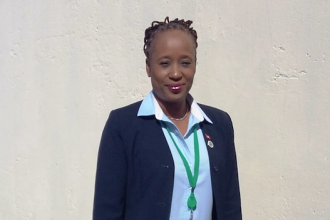Introduction
Citizenship by Investment (or Investor Immigration) Programmes have drawn considerable media attention in recent years, especially in the OECS where a number of countries have been operating Citizenship by Investment Programmes. This article, submitted at the request of the OECS Secretariat, is intended to provide greater insights into the programme in St. Kitts and Nevis, from the standpoint of a private entity offering citizenship by investment services internationally from its offices in St. Kitts and Nevis.
Immigrant Investor Programmes Around the World
Immigrant Investor Programmes have been in existence since the 1980’s starting with the St. Kitts and Nevis Citizenship by Investment Programme (CBIP), which was established in 1984 (just one year after St. Kitts and Nevis obtained Independence), with a view to accelerating growth and development in the fledgling nation. Since then numerous countries have followed suit in pursuit of various economic objectives. For instance, Canada launched its Immigrant Investor Programme in 1986 with the aim of “having experienced business people contribute to Canada’s growth and long-term prosperity by investing in Canada’s prosperity.” Similarly, according to the United States Citizenship and Immigration Services (USCIS) the Investor Immigrant Program in the United States, also known as EB-5, “was created by Congress in 1990 to stimulate the US Economy through job creation and capital investment by foreign investors.”
Under the EB-5 programme of the United States the minimum qualifying investment is US$1 million but this amount would be cut in half, to US$500,000, if the investment is in a High Employment or Rural Area. Apart from St. Kitts and Nevis, Canada, and the USA, numerous countries have obtained significant economic benefits from Investor Immigrant Programmes that have taken a variety of shapes and forms in relation to structure, process, the financial and investment requirements, and the residency requirements. These include the United Kingdom, Australia, Malta, Cyprus, Singapore, Hong Kong, Belgium and a number of Caribbean Countries including Dominica, Antigua and Barbuda, and Grenada.
The St Kitts and Nevis Citizenship by Investment Programme (CBIP)
The St. Kitts and Nevis Citizenship by Investment Programme grew by leaps and bounds after it was restructured in 2006 through the termination of the Government Bond option for obtaining citizenship; the introduction of the Sugar Industry Diversification Foundation (SIDF) option; the increase in fees and in the minimum investment requirement in relation to the real estate option; and the introduction of a new marketing initiative aimed at bringing the programme to the attention of potential investors all over the world. The Sugar Industry Diversification Foundation was deemed necessary because the closure of the sugar industry in 2005 created a need for new sources of revenues and foreign exchange earnings to keep the economy afloat and to provide resources for social safety net payments to over 10% of the workers of the Country, who were displaced and risked being pushed below the poverty line as a result of the demise of the sugar industry.
Under the SIDF option, persons or families who contribute between US$250,000 and $400,000 (or more in the case of large families) are eligible to apply for citizenship by investment. Under the real estate option persons and families who invest US$400,000 in approved real estate projects (mainly hotel and condominium projects) and pay taxes and fees averaging over US$100,000 are eligible to apply for citizenship. The investment and fees do not guarantee citizenship because the applicants must be subject to due diligence investigations that are carried out by international due diligence providers, and they must also meet all of the other legislative, regulatory and administrative requirements of the programme.
The Economic Impact of the St. Kitts and Nevis Citizenship by Investment Programme
The CBIP, and the SIDF in particular, has certainly played a crucial role in helping St. Kitts and Nevis transition from a sugar monoculture to a more modern service-based economy. However, in my view, the biggest economic impact of the CBIP on the economy of St. Kitts and Nevis is in relation to debt reduction. The IMF recently reported that the public debt of St. Kitts and Nevis was cut in half from 160% of GDP (one of the highest in the world) to 80% of GDP in the four years between 2010 and 2014. This is a most remarkable achievement by any standard and it is due primarily to the operations of the CBIP which in 2014 contributed 14% of GDP to the revenues of the Government of St. Kitts and Nevis, and was the single most important contributor to the very healthy fiscal surplus of some 9.5% of GDP in that year.
According to the IMF, the CBIP also fueled a construction boom and boosted SIDF and public sector spending to help increase the growth rate to an average of some 6% per annum over 2013 and 2014, which is by far the highest in the region to date. Moreover, the range of hotel and condominium projects under construction and the transformation of the infrastructure of St. Kitts and Nevis in recent years, through the resources provided by the CBIP, have set the stage for sustained growth and enhanced development in the foreseeable future.
The Role of the Private Sector in the CBIP
The economic benefits of the Citizenship by Investment Programme go well beyond the required minimum investment and the fees that applicants are required to pay. In the St. Kitts and Nevis programme, for instance, all applicants are high net worth individuals with the potential to undertake major investments in the country, outside of the requirements of the CBIP. However, the private sector must take the lead in introducing them to investment opportunities and services. At CGC, we invite all successful citizenship applicants to make a contribution to our Federation and we provide them with general information about St. Kitts and Nevis and about investment opportunities in the country. In addition, depending on their interests, we introduce them to the relevant Government Departments and Ministries so that they could get a more detailed insight into the policies and priorities of the Government and of the requirements for the specific sectors of interest to them. In advising clients on potential investments we also take cognizance of the Government’s Physical Development Plan in relation to the specific areas in which the Government or relevant public corporations, such as the Whitegate Development Corporation, would wish to attract various types of projects, and we consult with the St. Kitts Investment Promotion Agency concerning fiscal and tax incentives and other relevant information that would assist investors.
CGC also maintains a relationship with successful applicants and assist them, either directly or through our related concierge services enterprise, Elite St. Kitts, in procuring all local services that they may require from time to time. We also keep all existing and past clients up to date on an ongoing basis in relation to current developments and investment opportunities through our quarterly publication, Elite St. Kitts Newsletter. In addition, in our very extensive international marketing efforts, we place considerable emphasis on investment facilitation services, and promote citizenship services as complementary to the investment facilitation function.
The efforts of CGC have been very successful in attracting significant inflows of investment to St. Kitts and Nevis. Specifically, we have attracted or facilitated investments in a number of the major projects in St. Kitts and Nevis including Koi Resort & Residences, Imperial Bay Beach & Golf Residences, Rendezvous Hill, Heldons Resort & Residences and Pelican Bay Embassy Suites hotel. We have encouraged one of our clients to establish an education foundation, Liamuiga Education Foundation, which provides grants for the benefit of St. Kitts & Nevis students interested in pursuing higher education. As a licensed corporate services provider that offers a wide range of financial, corporate governance, immigration, concierge, real estate, and destination wedding services either directly or through related entities, CGC is well placed to offer a comprehensive and integrated package of services to investors.
The Key Ingredients of a Successful CBIP
There is significant risk in any Immigrant Investor Programme. Even in advanced countries, the Investor Immigrant Programmes have encountered fraudulent activities of various types. For instance, in an Investor Alert, the US Securities and Exchange Commission (SEC) and USCIS stated that they “are aware of investment scams targeting foreign nationals who seek to become lawful US residents through the Immigrant Investor Programme (EB-5)”. These risks, however, can be managed through proper care and attention.
Mr. Wendell Lawrence, whom I succeeded as Chief Executive Officer of CGC, has consistently expressed the view that effective regulation and a robust policy framework are perhaps the most critical ingredients of a successful Immigrant Investor Programme. In his view, such regulation and policy framework must, inter alia, provide for meticulous and rigorous due diligence in respect of applicants; systematic collaboration with regional and foreign Governments to address security risks and to prevent regulatory competition among the various jurisdiction; high standards of transparency and accountability in relation to the collection and use of the resources generated by the programme; tight regulatory control over the agents and key actors in the programme especially in relation to the screening of applicants, marketing, and the dissemination of information; continuous environment scanning for threats and escalation in risks and the capacity to act promptly to mitigate such elevated risks; and public acceptance as well as bi-partisan support for the programme.
Conclusion
Immigrant Investor Programmes (including Citizenship by Investment Programmes) have huge economic benefits the countries all over the world – developed and developing. Moreover, while there are significant risks associated with such programmes, such risks could be mitigated through effective regulation and responsive policy frameworks. In the OECS Economic Union, in particular, with so many countries introducing or planning to introduce such programmes, there is considerable scope for greater collaboration and the establishment of a uniform regulatory framework. This would enhance the credibility of the programmes and boost the confidence of the international community in our ability to manage such programmes.
By Natalie John, FCIS
CEO, Caribbean Governance Consultants Inc.




